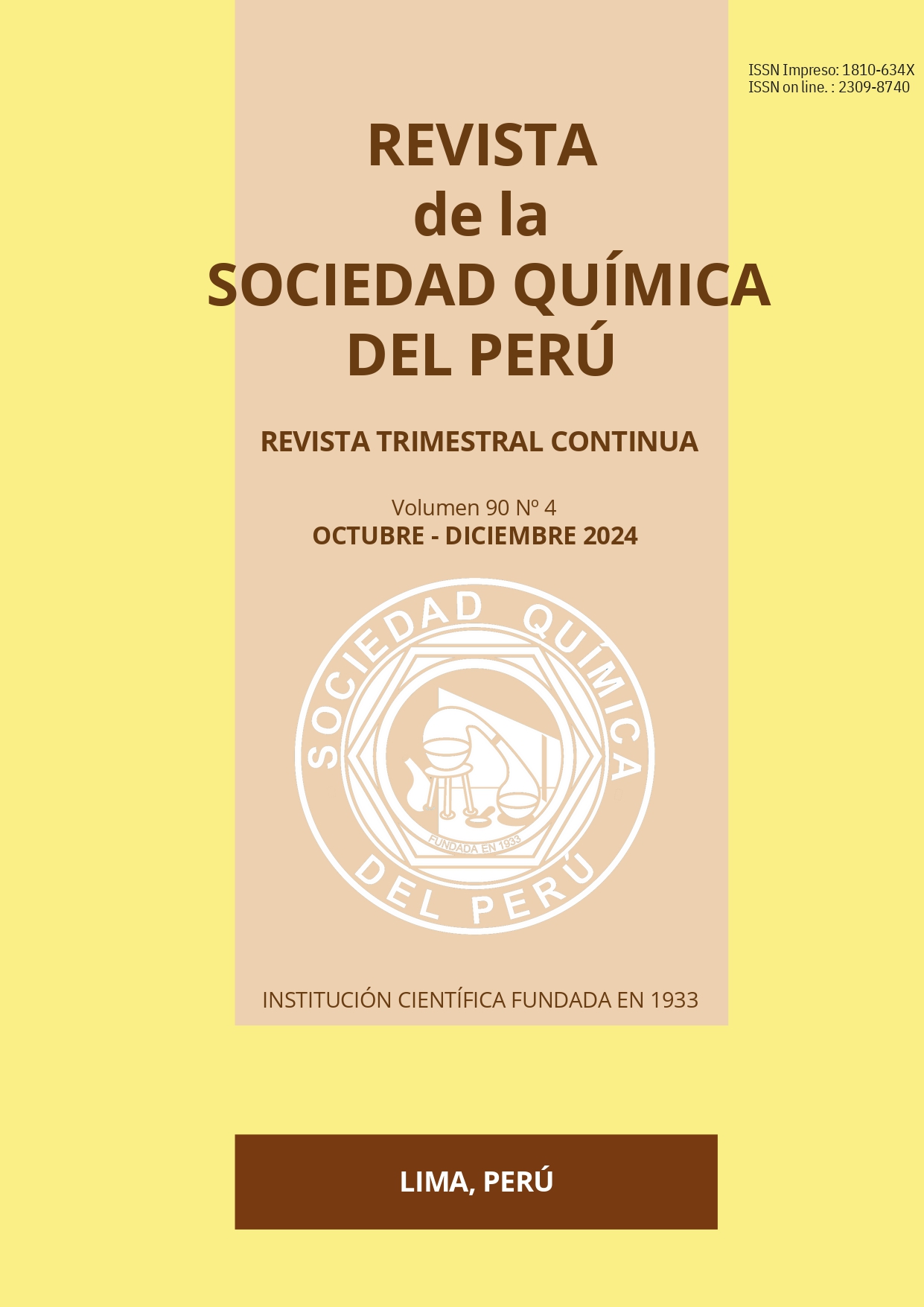PHYSICOCHEMICAL CHARACTERIZATION, TOTAL ALKALOIDS AND ANTIOXIDANT CAPACITY OF ALCOHOLIC EXTRACTS OF BARK CINCHONA MICRANTHA
Abstract
Cinchona micrantha, cinchona tree, is an Amazonian plant traditionally used in the treatment of malaria, possessing antidiarrheal and antipyretic properties. The objective of this study was to determine the physicochemical parameters, in vitro antioxidant capacity and total alkaloids of Cinchona micrantha alcoholic extracts. Extracts were prepared by maceration from the dried barks, using 50%, 70% and 96% ethanol as solvent. The extracts showed values of relative density, total solids, refractive index, Brix degrees and pH. The 70 % extract showed higher antioxidant capacity by the DPPH method with a TEAC of 260.25 ± 4.212 mg trolox/g dry extract and an IC50 of 0.013 ± 0.00, as well as a higher content of alkaloids expressed as percentage of quinine and cinchonin. It is concluded that the physicochemical parameters serve as a quality control tool to have technical specifications of the alcoholic extracts of Cinchona micrantha bark from the San Juan Bautista de Cañaris, Lambayeque region, and that the 70% extract has a higher antioxidant potential and alkaloid content. Finally, the research work favors the updating of scientific bibliography.
Downloads
Revista Arbitrada
Derechos reservados: Prohibido el uso total o parcial del material de esta revista sin indicar la fuente de origen.
Nota: Las referencias comerciales que aparecen en los trabajos no constituyen una recomendación de la
Sociedad Química del Perú










